Tag: politics
UC Berkeley Oral History Center: Jerry Brown Oral History
“Jerry Brown, I found, to be a man with a largely unwavering set of core values and principles who sometimes appears to choose contradictory ways in which to express those drives.”
— Director Martin Meeker, Oral History Center of The Bancroft Library, reflecting on his experience interviewing Jerry Brown
Inside the Jerry Brown Oral History
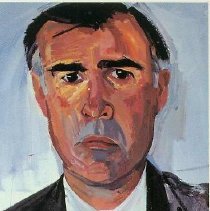
There are very few individuals who are what might be called a “shoe-in” for an Oral History Center life history interview. Governor Jerry Brown is one who easily qualifies. Brown’s career as an elected official began in Southern California in 1969 when he was elected to the Los Angeles Community College Board of Trustees and then continued for nearly the next fifty years through a succession of high offices; in 2018 he concluded his record fourth term as governor.
In forty hours of interviews, there are at least three main areas of study of the life of Jerry Brown, and politics much more broadly, that might be impacted by the contents of this interview from today’s vantage point: the historical trajectory of key social and political issues; the influence of creative and unique ideas upon Brown and his agenda; and what might be called the philosophy of realpolitik — of how politics really works, at least according to Brown.
The Jerry Brown oral history was made possible by funding from the State Government Oral History Program, A Project of the California Secretary of State, State Archives.
Dive Deeper
Dive deeper into the political life of Jerry Brown through the Jerry Brown oral history.
“20 Shades of Jerry Brown” UC Berkeley Podcast
“We had 20 interview sessions, and I would say that in those 20 interview sessions, we had 20 different shades of Jerry Brown,” explains Oral History Center Director Martin Meeker in UC Berkeley’s 9-minute Fiat Vox podcast, “Berkeley oral history project reveals 20 shades of Jerry Brown.” Get a taste of the oral history — hear Brown talk about the medfly invasion, Linda Ronstadt, and politics past and present. Martin Meeker provides insights into this “extraordinarily detailed, thoughtful, self-critical, broad, and sweeping oral history.”
Jerry Brown Interview History
For the historians at UC Berkeley’s Oral History Center, the question was not, “Should this interview be done?” but rather, “How might it be done at all?” Get the inside story about the making of this riveting 40-hour oral history from interviewer and Oral History Center Director Martin Meeker.
Governor Gray Davis Foreword to the Jerry Brown Oral History
When Gray Davis tried to have a hole in the governor’s rug repaired, Jerry Brown responded, “That hole will save the state at least $500 million, because legislators cannot come down and pound on my desk demanding lots of money for their pet programs while looking at a hole in my rug!” Find out why Gray Davis, the 37th Governor of the State of California, who served as chief of staff to Jerry Brown during his first two terms as governor (1975-1981), thinks Jerry Brown is one of the most consequential governors in California history.
California State Government Oral History Program
The Jerry Brown oral history is a part of the State Government Oral History Program and is the cornerstone of the re-launch of the program under California Secretary of State Alex Padilla. All of the oral history materials (recordings and transcripts) will be deposited with the California State Archives and available to users through their website as well.
Jerry Brown Oral History Transcript
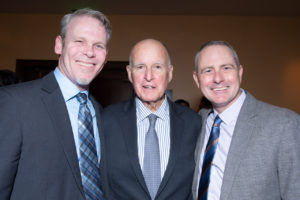
Read the transcript of the 40-hour oral history. In this oral history, the following topics are discussed at length: family background and upbringing; education, religion, and friendships; the political career of Pat Brown; college, seminary, and law school; California statewide elected offices, including Governor of California; campaigns for elected office, including for US President; election reform; taxation, budgets, and deficits; law, the courts, and criminal justice reform; immigration; the environment and climate change; education reform, charter schools, and higher education; Oakland, CA; popular culture, journalism, and political campaigns; political philosophy, theories of governance, and applied politics.
KQED Forum Podcast Featuring OHC Director Martin Meeker
Politics was the family business. The Democratic party was tribal for Brown. Listen as Oral History Center Director Martin Meeker, and KQED interview partners Scott Shafer and Guy Marzorati, talk about the unique political perspective and interviewing style of Jerry Brown.

KQED Podcast: The Political Mind of Jerry Brown
From KQED: The Political Mind of Jerry Brown brings listeners the wisdom of the former Governor, Mayor, and presidential candidate. The Oral History Center’s Martin Meeker and Todd Holmes, and KQED’s Scott Shafer, interviewed Brown for more than 40 hours, covering the former governor’s life and half-century in the political game – and Brown has some lessons he’d like to share. Premiering January 8 with hour-long episodes on KQED 88.5 FM every Wednesday at 8pm through January 29.
Find this interview and all our oral histories from the search feature on our home page. You can search by name, key word, and several other criteria.
Bancroft Roundtable: Thursday, February 20 at noon in the Lewis-Latimer Room of The Faculty Club (This event has passed.)
Brown, Behind the Scenes: Contending with Governor Jerry Brown and His Oral History
In this presentation, OHC historians Martin Meeker and Todd Holmes will provide the behind-the-scenes story of a remarkable interview with a singular Californian and offer an initial perspective on how this oral history might influence our understanding of California and its political culture.
Women of SLATE: Susan Griffin and Julianne Morris
The Oral History Center has been conducting a series of interviews about SLATE, a student political party at UC Berkeley from 1958 to 1966 – which means SLATE pre-dates even the Free Speech Movement. The newest additions to this project include two women who joined SLATE in the early 1960s at a tumultuous time at UC Berkeley: Susan Griffin and Julianne Morris.
Susan Griffin is an accomplished writer, and was a member of the UC Berkeley student political organization SLATE in the early 1960s. Griffin grew up in Los Angeles, California. She attended UC Berkeley, where she became active in SLATE, attending protests and engaging in political discussions. Griffin left Berkeley in 1963, but continued to work as a writer in the San Francisco Bay Area, producing many works, including Woman and Nature: The Roaring Inside Her. Over the years, Griffin remained active in causes of social justice, including the women’s movement and anti war protests.
Julianne Morris is a former social worker and mediator, and was a member of the UC Berkeley student political organization SLATE in the early 1960s. Morris grew up in Compton, California, and attended UC Los Angeles, where she helped found the student political group PLATFORM based on discussions with SLATE members. She then transferred to UC Berkeley, where she became active in SLATE, attending protests and running for ASUC student representative. Morris stayed at UC Berkeley to earn her master’s in social work. She then moved to New York City in 1964 and was a social worker for many years, where she helped start women’s centers, rape crisis programs, and became a part of the women’s movement. She returned to Berkeley in the early nineties and reconnected with former SLATE friends through reunions and an ongoing political discussion group.
Griffin and Morris were among the second generation of SLATE activists and joined the group around the same time in 1960 – after the famous HUAC protest in May of 1960 and before the Free Speech Movement in 1964. They also have similar upbringings in Jewish (adoptive family, in Griffin’s case) and politically left families who feared encroaching McCarthyism. These backgrounds helped ignite a political consciousness in both women that led them to SLATE.
Griffin and Morris’s oral histories build on an archive of SLATE history, but they also speak specifically to their experiences as women in this group. Both recount instances of feeling marginalized as women, of being left to do the “scut work” like mimeographing and cooking for hungry activists. They even recount tensions at a 1984 SLATE reunion in which those newly empowered by feminism expressed displeasure with the way they had been treated; many of the men denied this discrimination, but others took it to heart and sincerely apologized. And yet, Griffin and Morris both were encouraged to run for ASUC office in the early 1960s, campaigning on the SLATE platform and often pushing their own boundaries of what they thought was possible. Despite the challenges of being a woman in this campus political group, there were still opportunities to grow as individuals and as leaders.
Listen as Susan Griffin and Julianne Morris share their memories of running for ASUC on the SLATE ticket at UC Berkeley:
Even though both Griffin and Morris had decreased participation in SLATE or left campus by 1964, their experiences in the organization clearly shaped their perspectives about politics and activism, particularly as they both became involved with the women’s movement. Griffin explained, “The guys may not have known it, but they were training feminist activists in all that period.”
Most importantly, by recalling their times with SLATE and later political work, both Griffin and Morris emphasized the importance of building and sustaining community in activist groups. For Morris, joining SLATE helped her find a place where she belonged. Griffin pointed to organizations of politically like-minded individuals as ways to create belonging and “joy” through an almost spiritual experience of protest.
Listen as Julianne Morris reflects on SLATE’s impact on the Free Speech Movement:
Come learn more about SLATE, and explore the oral histories of Susan Griffin and Julianne Morris!
Bay Area Women in Politics Oral History Project
This project is unique in that it focuses on women in one geographic region in order to get a clearer picture of the breadth of political work women have been doing on the ground and behind the scenes.
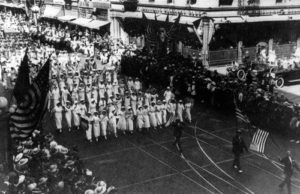
Nineteen ninety-two has been dubbed “The Year of the Woman,” a phenomenon in which a wave of women candidates swept local and national races for public office. California led this charge by becoming the first state in American history to be represented by two women senators—Barbara Boxer and Dianne Feinstein. And since 2016—after a presidential election that provoked heated debate about gender discrimination and sexual harassment—many women stepped up to the challenge of engaging even more visibly in the American political system. Since then, organizations like Emily’s List and She Should Run reported record-breaking numbers of women who wanted to make their voices heard by running for public office.
And yet, 1992 was not the beginning of women’s political activism, but rather the culmination of decades of organization encouraging women to get involved and run for office. For generations, Bay Area women have built the foundations of political activism that span neighborhood organizations to support networks. And their stories inform our present.
In order to document these stories, I am developing the Bay Area Women in Politics Oral History Project to record the history of these local women and their impact on and journeys through politics. The Oral History Center of The Bancroft Library at UC Berkeley continues to preserve stories about California politicians, but this project is unique in that it focuses on women in one geographic region in order to get a clearer picture of the breadth of political work women have been doing on the ground and behind the scenes. Documenting political engagement outside of traditional political venues will capture more stories about women in politics and a more diverse array of stories.
For instance, the pilot interview for this oral history project is with Mary Hughes, a Bay Area political consultant. In her interview, Hughes explained that “in politics and in political consulting, you either win races or you don’t. If you don’t win, no one hires you. If you do win, everybody wants to hire you.” Hughes’s successful career in the Bay Area spans decades and highlights the prominence of women in national politics. And though she does not wish to run for office herself, Hughes sees her role as someone who can best serve her community by managing the election process for political candidates—especially other women. Hughes’s recollections are an example of the kinds of stories that will drive this oral history project.

These long-form oral history interviews survey Bay Area political women’s backgrounds in and passion for political work through self-reflection. This format allows for comparisons between various avenues of political activism—like organizers and elected officials. It also reveals the importance of networks and mentors, and the impact they have had on women in the Bay Area political scene.
As engaged citizens, we need to know more about these women who helped create a space for themselves in Bay Area political life. Who are these women and what are their stories? From neighborhood organizations to national campaigns, what is the range of political activism in which these women engage? How has being a woman been a challenge or an asset to their political involvement? How have these women been working in the background of political life for generations? How does living and working in California affect political opportunities? What kind of political power do these women wield locally and nationally?
As we approach the hundredth anniversary of women’s suffrage, conducting oral histories with women activists and politicians in California’s San Francisco Bay Area will help shape the national narrative about women’s historic, current, and future roles in American political life. Further, gathering firsthand stories will help inspire and instruct a new generation of politically engaged women.
In addition to collecting primary source materials, The Oral History Center shares its collection with the general public through interpretive materials—like podcasts—and educational initiatives. Recording the contributions of these impressive Bay Area women—political fundraisers, organizers, and elected officials—through life history interviews is the first step in developing curriculum for workshops that cultivate young women’s political leadership. These workshops will use oral histories as a tool to foster civic engagement across the political spectrum, as well as to help develop confidence and skills of future women leaders. We also plan to create a podcast, a series of public forums, and a museum exhibit featuring these interviews.
We are currently raising funds for this project, and need your help to undertake the expansion of this ambitious oral history collection. You can support this project by giving to the Oral History Center. Please note under special instructions: “For the Bay Area Women in Politics Oral History Project.” To learn more about this project, please contact Amanda Tewes at atewes@berkeley.edu or 510-666-3687.
Amanda Tewes is an interviewer with The Oral History Center and specializes in California history and political culture.
The Oral History Center is a research program of the University of California, Berkeley. The OHC helps preserve contemporary history by conducting carefully researched video recorded and transcribed interviews. As part of UC Berkeley’s commitment to open access, archival copies of the audio/video and transcripts are placed in The Bancroft Library and are publicly accessible online.
Resource: PoliticoPro-California
 The Library acquired PoliticoPro-California. Politico is a major news organization that has covered U.S. politics and government since 2007, and they have expanded their coverage to larger states like California. In additional to finding news articles about the state, the Datapoint and Documents modules contain current primary source information and info-graphics used in Politico’s reporting for California and the nation. These can be reused in papers, classes, or other research projects. Users can also sign up for customized news alerts and the ability to correspond with Politico’s news reporters.
The Library acquired PoliticoPro-California. Politico is a major news organization that has covered U.S. politics and government since 2007, and they have expanded their coverage to larger states like California. In additional to finding news articles about the state, the Datapoint and Documents modules contain current primary source information and info-graphics used in Politico’s reporting for California and the nation. These can be reused in papers, classes, or other research projects. Users can also sign up for customized news alerts and the ability to correspond with Politico’s news reporters.
Access Note: This database is currently unavailable for use through the proxy. For off campus access, please use the VPN.
New Project Release: Marion and Herb Sandler Oral History Project
New Project Release: Marion and Herb Sandler Oral History Project
Herb Sandler and Marion Osher Sandler formed one of the most remarkable partnerships in the histories of American business and philanthropy—and, if their friends and associates would have a say in things, in the living memory of marriage writ large. This oral history project documents the lives of Herb and Marion Sandler through their shared pursuits in raising a family, serving as co-CEOs for the savings and loan Golden West Financial, and establishing a remarkably influential philanthropy in the Sandler Foundation. This project consists of eighteen unique oral history interviews, at the center of which is a 24-hour life history interview with Herb Sandler.
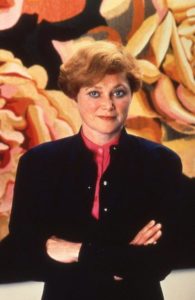
Marion Osher Sandler was born October 17, 1930, in Biddeford, Maine, to Samuel and Leah Osher. She was the youngest of five children; all of her siblings were brothers and all went on to distinguished careers in medicine and business. She attended Wellesley as an undergraduate where she was elected into Phi Beta Kappa. Her first postgraduate job was as an assistant buyer with Bloomingdale’s in Manhattan, but she left in pursuit of more lofty goals. She took a job on Wall Street, in the process becoming only the second woman on Wall Street to hold a non-clerical position. She started with Dominick & Dominick in its executive training program and then moved to Oppenheimer and Company where she worked as a highly respected analyst. While building an impressive career on Wall Street, she earned her MBA at New York University.
Herb Sandler was born on November 16, 1931 in New York City. He was the second of two children and remained very close to his brother, Leonard, throughout his life. He grew up in subsidized housing in Manhattan’s Lower East Side neighborhood of Two Bridges. Both his father and brother were attorneys (and both were judges too), so after graduating from City College, he went for his law degree at Columbia. He practiced law both in private practice and for the Waterfront Commission of New York Harbor where he worked on organized crime cases. While still living with his parents at Knickerbocker Village, he engaged in community development work with the local settlement house network, Two Bridges Neighborhood Council. At Two Bridges he was exposed to the work of Episcopal Bishop Bill Wendt, who inspired his burgeoning commitment to social justice.
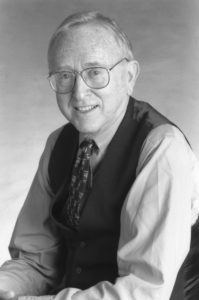
Given their long and successful careers in business, philanthropy, and marriage, Herb and Marion’s story of how they met has taken on somewhat mythic proportions. Many people interviewed for this project tell the story. Even if the facts don’t all align in these stories, one central feature is shared by all: Marion was a force of nature, self-confident, smart, and, in Herb’s words, “sweet, without pretentions.” Herb, however, always thought of himself as unremarkable, just one of the guys. So when he first met Marion, he wasn’t prepared for this special woman to be actually interested in dating him. The courtship happened reasonably quickly despite some personal issues that needed to be addressed (which Herb discusses in his interview) and introducing one another to their respective families (but, as Herb notes, not to seek approval!).
Within a few years of marriage, Marion was bumping up against the glass ceiling on Wall Street, recognizing that she would not be making partner status any time soon. While working as an analyst, however, she learned that great opportunity for profit existed in the savings and loan sector, which was filled with bloat and inefficiency as well as lack of financial sophistication and incompetence among the executives. They decided to find an investment opportunity in California and, with the help of Marion’s brothers (especially Barney Osher), purchased a tiny two-branch thrift in Oakland, California: Golden West Savings and Loan.
Golden West—which later operated under the retail brand of World Savings—grew by leaps and bounds, in part through acquisition of many regional thrifts and in part through astute research leading to organic expansion into new geographic areas. The remarkable history of Golden West is revealed in great detail in many of the interviews in this project, but most particularly in the interviews with Herb Sandler, Steve Daetz, Russ Kettell, and Mike Roster, all of whom worked at the institution. The savings and loan was marked by key attributes during the forty-three years in which it was run by the Sandlers. Perhaps most important among these is the fact that over that period of time the company was profitable all but two years. This is even more remarkable when considering just how volatile banking was in that era, for there were liquidity crises, deregulation schemes, skyrocketing interest rates, financial recessions, housing recessions, and the savings and loan crisis of the 1980s, in which the entire sector was nearly obliterated through risky or foolish decisions made by Congress, regulators, and managements. Through all of this, however, Golden West delivered consistent returns to their investors. Indeed, the average annual growth in earnings per share over 40 years was 19 percent, a figure that made Golden West second only to Warren Buffett’s Berkshire Hathaway, and the second best record in American corporate history.
Golden West is also remembered for making loans to communities that had been subject to racially and economically restrictive redlining practices. Thus, the Sandlers played a role in opening up the dream of home ownership to more Americans. In the offices too, Herb and Marion made a point of opening positions to women, such as branch manager and loan officer, previously held only by men. And, by the mid-1990s, Golden West began appointing more women and people of color to its board of directors, which already was presided over by Marion Sandler, one of the longest-serving female CEOs of a major company in American history. The Sandlers sold Golden West to Wachovia in 2006. The interviews tell the story of the sale, but at least one major reason for the decision was the fact that the Sandlers were spending a greater percentage of their time in philanthropic work.
One of the first real forays by the Sandlers into philanthropic work came in the wake of the passing of Herb’s brother Leonard in 1988. Herb recalls his brother with great respect and fondness and the historical record shows him to be a just and principled attorney and jurist. Leonard was dedicated to human rights, so after his passing, the Sandlers created a fellowship in his honor at Human Rights Watch. After this, the Sandlers giving grew rapidly in their areas of greatest interest: human rights, civil rights, and medical research. They stepped up to become major donors to Human Rights Watch and, after the arrival of Anthony Romero in 2001, to the American Civil Liberties Union.
The Sandlers’ sponsorship of medical research demonstrates their unique, creative, entrepreneurial, and sometimes controversial approach to philanthropic work. With the American Asthma Foundation, which they founded, the goal was to disrupt existing research patterns and to interest scientists beyond the narrow confines of pulmonology to investigate the disease and to produce new basic research about it. Check out the interview with Bill Seaman for more on this initiative. The Program for Breakthrough Biomedical Research at the University of California, San Francisco likewise seeks out highly-qualified researchers who are willing to engage in high-risk research projects. The interview with program director Keith Yamamoto highlights the impacts and the future promise of the research supported by the Sandlers. The Sandler Fellows program at UCSF selects recent graduate school graduates of unusual promise and provides them with a great deal of independence to pursue their own research agenda, rather than serve as assistants in established labs. Joe DeRisi was one of the first Sandler Fellows and, in his interview, he describes the remarkable work he has accomplished while at UCSF as a fellow and, now, as faculty member who heads his own esteemed lab.
The list of projects, programs, and agencies either supported or started by the Sandlers runs too long to list here, but at least two are worth mentioning for these endeavors have produced impacts wide and far: the Center for American Progress and ProPublica. The Center for American Progress had its origins in Herb Sandler’s recognition that there was a need for a liberal policy think tank that could compete in the marketplace of ideas with groups such as the conservative Heritage Foundation and the American Enterprise Institute. The Sandlers researched existing groups and met with many well-connected and highly capable individuals until they forged a partnership with John Podesta, who had served as chief of staff under President Bill Clinton. The Center for American Progress has since grown by leaps and bounds and is now recognized for being just what it set out to be.
The same is also true with ProPublica. The Sandlers had noticed the decline of traditional print journalism in the wake of the internet and lamented what this meant for the state of investigative journalism, which typically requires a meaningful investment of time and money. After spending much time doing due diligence—another Sandler hallmark—and meeting with key players, including Paul Steiger of the Wall Street Journal, they took the leap and established a not-for-profit investigative journalism outfit, which they named ProPublica. ProPublica not only has won several Pulitzer Prizes, it has played a critical role in supporting our democratic institutions by holding leaders accountable to the public. Moreover, the Sandler Foundation is now a minority sponsor of the work of ProPublica, meaning that others have recognized the value of this organization and stepped forward to ensure its continued success. Herb Sandler’s interview as well as several other interviews describe many of the other initiatives created and/or supported by the foundation, including: the Center for Responsible Lending, Oceana, Center on Budget and Policy Priorities, Learning Policy Institute, and more.
Herb and Marion Sandler also played key roles in the formation and funding of two important research centers here on the UC Berkeley campus which have a global reach: the Berkeley Center for Equitable Growth (CEG) and the Human Rights Center. The CEG is directed by economist Emmanual Saez and has supported the influential work of Thomas Piketty which looks at methods for reducing wealth and income disparities around the globe. The Human Rights Center has for the past 25 years investigated and shed light upon human rights abuses around the globe.
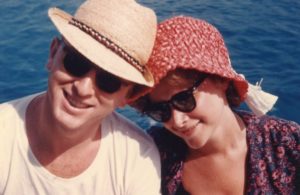
A few interviewees shared the idea that when it comes to Herb and Marion Sandler there are actually three people involved: Marion Sandler, Herb Sandler, and “Herb and Marion.” The later creation is a kind of mind-meld between the two which was capable of expressing opinions, making decisions, and forging a united front in the ambitious projects that they accomplished. I think this makes great sense because I find it difficult to fathom that two individuals alone could do what they did. Because Marion Sandler passed away in 2012, I was not able to interview her, but I am confident in my belief that a very large part of her survives in Herb’s love of “Herb and Marion,” which he summons when it is time to make important decisions. And let us not forget that in the midst of all of this work they raised two accomplished children, each of whom make important contributions to the foundation and beyond. Moreover, the Sandlers have developed many meaningful friendships (see the interviews with Tom Laqueur and Ronnie Caplane), some of which have spanned the decades.
The eighteen interviews of the Herb and Marion Sandler oral history project, then, are several projects in one. It is a personal, life history of a remarkable woman and her mate and life partner; it is a substantive history of banking and of the fate of the savings and loan institution in the United States; and it is an examination of the current world of high-stakes philanthropy in our country at a time when the desire to do good has never been more needed and the importance of doing that job skillfully never more necessary.
Martin Meeker, Charles B. Faulhaber Director, Oral History Center, UC Berkeley
List of Interviews of the Marion and Herbert Sandler Oral History Project
Ronnie Caplane, “Ronnie Caplane: On Friendship with Marion and Herb.”
Joseph DeRisi, “Joe DeRisi: From Sandler Fellow to UCSF Professor of Biochemistry.”
Stephen Hauser, “Stephen Hauser: Establishing the Sandler Neurosciences Center at UCSF.”
Russell Kettell, “Russ Kettell: A Career with Golden West Financial.”
Thomas Laqueur, “Tom Laqueur: On the Meaning of Friendship.”
Bernard Osher, “Barney Osher: On Marion Osher Sandler.”
Michael Roster, “Michael Roster: Attorney and Golden West Financial General Counsel.”
Kenneth Roth, “Kenneth Roth: Human Rights Watch and Achieving Global Impact.”
Herbert Sandler, “Herbert Sandler: A Life with Marion Osher Sandler in Business and Philanthropy.”
James Sandler, “Jim Sandler: Commitment to the Environment in the Sandler Foundation.”
Susan Sandler, “Susan Sandler: The Sandler Family and Philanthropy.”
William Seaman, “Bill Seaman: The American Asthma Foundation.”
Paul Steiger, “Paul Steiger: Business Reporting and the Creation of ProPublica.”
Richard Tofel, “Richard Tofel: The Creation and Expansion of ProPublica.”
Lampooning Presidents through Words, Images and Scholarship

As two of the oldest modern democracies, France and the United States share a long tradition of freedom of speech and of the press (and at times governmental censorship). The two societies have found catharsis in the mockery of their highest elected officials through caricatures, cartoons, and critical writings. Here are a few recent library acquisitions, in English and in French, from both sides of the Atlantic in this category of political critique:
Baldwin, Alec and Kurt Andersen. You Can’t Spell America Without Me: The Really Tremendous Inside Story of My Fantastic First Year As President Donald J. Trump (a So-Called Parody). New York: Penguin Press, 2017.
Bourhis, Hervé and Rudy Spiessert. Trump de A à Z. Bruxelles: Casterman, 2017.
Burrell, Ginger R. Un[Hood]ed. Morgan Hill, CA: Midnight Moon Press, 2017.
Cole, David, and Melanie W. Stinnett. Rules for Resistance: Advice from Around the Globe for the Age of Trump. New York: The New Press, 2017.
Connolly, William E. Aspirational Fascism: The Struggle for Multifaceted Democracy Under Trumpism. Minneapolis: University of Minnesota Press, 2017.
Daniel, Jean-Marc. Macron: La valse folle de Jupiter. Paris: l’Archipel, 2018.
Être postmoderne / Michel Maffesoli; postface de Hélène Strohl: Emmanuel Macron, icône ou fake de la postmodernité? Paris: Les Éditions du Cerf, 2018.
Filoche, Gérard. Macron, ou, la casse sociale. Paris: l’Archipel, 2018.
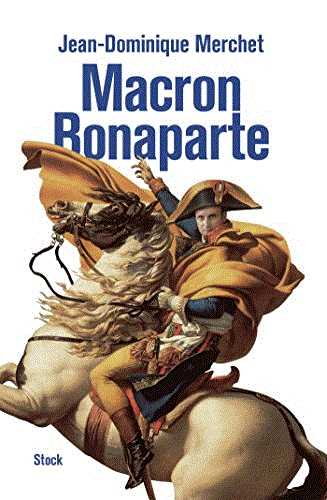 Fottorino, Éric and Joep Bertrams. Détrumpez-vous!, Paris: Gallimard, 2017.
Fottorino, Éric and Joep Bertrams. Détrumpez-vous!, Paris: Gallimard, 2017.
Fourquet, Jérôme. Le nouveau clivage: mondialisation, libre-échange, métropolisation, flux migratoires : état des démocraties occidentales. Paris: Les éditions du Cerf, 2018.
Giroux, Henry A. The Public in Peril: Trump and the Menace of American Authoritarianism. New York, NY: Routledge, 2018.
Johnston, David C. It’s Even Worse Than You Think: What the Trump Administration Is Doing to America. New York: Simon & Schuster, 2018.
Lee, Bandy X. The Dangerous Case of Donald Trump: 27 Psychiatrists and Mental Health Experts Assess a President. New York: St. Martin’s Press, 2017.
Merchet, Jean-Dominique. Macron Bonaparte: Essai. Paris: Stock, 2017.
Nanos, Nik. The Age of Voter Rage. London: Eyewear Publishing, 2018.
Taguieff, Pierre-André. Macron: miracle ou mirage? Paris: Éditions de l’Observatoire, 2017.
Toulouse, Anne. Dans la tête de Donald Trump. Paris: Stock, 2016.
Trumpism: The Politics Of Gender in a Post-Propitious America / edited by Laura Finley and Matthew Johnson. Newcastle upon Tyne, UK; Cambridge Scholars Publishing, 2018.
Willem. Macron: L’amour fou. Bordeaux: Les Requins marteaux, 2018.
Zef, Kak and Degreff. Macron, L’an I: pardon de vous le dire. Paris: Florent Massot, 2018.
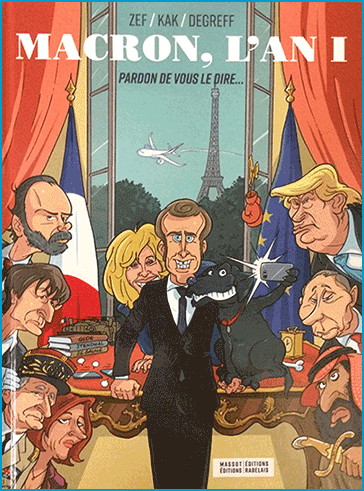
OHC Director’s Column, November 2018
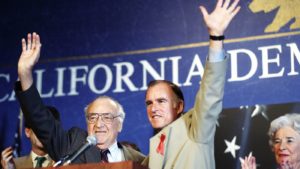
The Oral History Center is excited to announce that we have joined forces with local public radio station KQED on a significant new partnership. The occasion for this collaboration is a new oral history of four-term California governor Jerry Brown. The project is expected to encompass at least 30 hours of conversations with Brown, taking place over a series of months, beginning later this year. The interviews will span most of Brown’s adult life, including his time in the seminary, lessons learned from his father’s governorship, his terms as secretary of state, attorney general and governor of California, and mayor of Oakland, and three presidential bids. They will address a life lived in and out of the public eye, and a long and extraordinary career devoted to public service.
Research and interview duties will be shared by my colleague, Todd Holmes, and I. We’ll be joined by Scott Shafer, senior editor for KQED’s Politics and Government Desk and co-host of the weekly radio program and podcast Political Breakdown. “Jerry Brown is a singularly important figure in California political history,” Shafer says. “His long and remarkable time in and out of public life in California, including his personal reflections and insights, should be documented for posterity, and we’re delighted to be a part of doing just that.”
The final interviews will join our collection of political oral histories, which include major interview projects on four earlier California governors, including Jerry’s father Pat Brown, who was elected in 1958 and again in 1962. Transcripts and audio and video of the Brown interviews will be made available on our website. We are thrilled to partner with KQED to see that Governor Brown’s oral history is completed and made available to everyone — and we are humbled to be the ones with the honor of making sure that this history is recorded and preserved.
Like all Oral History Center projects, we are obliged to raise funding to help support this endeavor as neither the state or the university will provide funding this extraordinarily important project. We are happy to accept donations large and small for those who agree that this oral history needs to be recorded and that we cannot miss this window of opportunity to get it done. Please contact me directly (mmeeker@berkeley.edu or 510-643-9733) with questions or think about making a donation online: http://ucblib.link/givetoOHC
Martin Meeker, @MartinDMeeker
Charles B. Faulhaber Director
Oral History Center
Hadley Roff: A Life in Politics, Government and Public Service
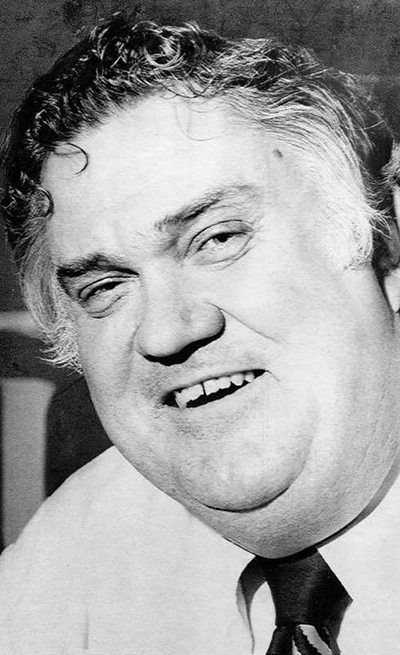 Now available: Hadley Roff: A Life in Politics, Government and Public Service Oral History Transcript with video excerpts below. Hadley Roff (1931-2016) was a top aid and advisor to four San Francisco mayors from 1967 to 1992: Joseph Alioto, Dianne Feinstein, Art Agnos and Frank Jordan. He attended Stanford University from 1950 to 1954 where he was editor of the Stanford Daily. From 1957 to 1964 he was a night beat reporter for the S.F. News. He became a vocal advocate for firefighter safety and was beloved by the San Francisco Fire Department, serving on the Fire Commission beginning in 1995. In these interviews, Roff recalls the turbulence in San Francisco in the 1970s and 1980s: Harvey Milk’s and George Moscone’s assassinations in 1978, Jonestown, the early years of the AIDS crisis. He recalls events on the national stage as they played out in San Francisco: Martin Luther King, Jr.’s assassination and Watergate, among others. In 1992 Roff was press secretary for Dianne Feinstein’s senatorial campaign, and head of her California senate staff office from 1992 to 1995.
Now available: Hadley Roff: A Life in Politics, Government and Public Service Oral History Transcript with video excerpts below. Hadley Roff (1931-2016) was a top aid and advisor to four San Francisco mayors from 1967 to 1992: Joseph Alioto, Dianne Feinstein, Art Agnos and Frank Jordan. He attended Stanford University from 1950 to 1954 where he was editor of the Stanford Daily. From 1957 to 1964 he was a night beat reporter for the S.F. News. He became a vocal advocate for firefighter safety and was beloved by the San Francisco Fire Department, serving on the Fire Commission beginning in 1995. In these interviews, Roff recalls the turbulence in San Francisco in the 1970s and 1980s: Harvey Milk’s and George Moscone’s assassinations in 1978, Jonestown, the early years of the AIDS crisis. He recalls events on the national stage as they played out in San Francisco: Martin Luther King, Jr.’s assassination and Watergate, among others. In 1992 Roff was press secretary for Dianne Feinstein’s senatorial campaign, and head of her California senate staff office from 1992 to 1995.
Freedom to Marry Oral History Project
The Freedom to Marry Oral History Project
In the historically swift span of roughly twenty years, support for the freedom to marry for same-sex couples went from an idea a small portion of Americans agreed with to a cause supported by virtually all segments of the population. In 1996, when Gallup conducted its first poll on the question, a seemingly insurmountable 68% of Americans opposed the extension of marriage rights. In a historic reversal, fewer than twenty years later several polls found that over 60% of Americans had come to support the freedom to marry nationwide. The rapid increase in support mirrored the progress in securing the right to marry coast to coast. Before 2004, no state issued marriage licenses to same-sex couples. By spring 2015, thirty-seven states affirmed the freedom to marry for same-sex couples, with a number of states extending marriage through votes in state legislatures or at the ballot box. The discriminatory federal Defense of Marriage Act, passed in 1996, denied legally married same-sex couples the federal protections and responsibilities afforded married different-sex couples—a double-standard corrected when a core portion of the act was overturned by the U.S. Supreme Court in 2013 in United States v. Windsor. The full national resolution came in June 2015 when, in Obergefell v. Hodges, the U.S. Supreme Court ruled that the Constitution’s guarantee of the fundamental right to marry applies equally to same-sex couples.
The Oral History Center is thrilled to release to the public the first major oral history project documenting the vast shift in public opinion about marriage, the consequential reconsideration of our nation’s laws governing marriage, and the actions of individuals and organizations largely responsible for these changes. The Freedom to Marry Oral History Project produced 23 interviews totaling nearly 100 hours of recordings. Interviewees include: Evan Wolfson, founder of Freedom to Marry; Kate Kendell, executive director of the National Center for Lesbian Rights; James Esseks, director of the ACLU’s LGBT & HIV project; and Thalia Zepatos, the movement’s “message guru” who worked at Freedom to Marry as director of research and messaging. Read on for video clips of the interviews and links to complete interview transcripts.
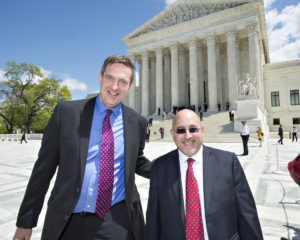
At the center of the effort to change hearts and minds, prevail in the courts and legislatures, win at the ballot, and win at the Supreme Court was Freedom to Marry, the national campaign launched by Harvard-trained attorney Evan Wolfson in 2003. Freedom to Marry’s national strategy focused from the beginning on setting the stage for a nationwide victory at the Supreme Court. Working with national and state organizations and allied individuals and organizations, Freedom to Marry succeeded in building a critical mass of states where same-sex couples could marry and a critical mass of public support in favor of the freedom to marry. This oral history project focuses on the pivotal role played by Freedom to Marry and their closest state and national organizational partners, as they drove the winning strategy and inspired, grew, and leveraged the work of a multitudinous movement.
Freedom to Marry Oral History Project Interview Transcripts:
Barbara Cox, “Barbara Cox on Marriage Law and the Governance of Freedom to Marry.”
Michael Crawford, “Michael Crawford on the Digital Campaign at Freedom to Marry.”
Scott Davenport, “Scott Davenport on Administration and Operations at Freedom to Marry.”
Jo Deutsch, “Jo Deutsch and the Federal Campaign.”
Sean Eldridge, “Sean Eldridge on Politics, Communications, and the Freedom to Marry.”
James Esseks, “James Esseks on the Legal Strategy, the ACLU, and LGBT Legal Organizations.”
Harry Knox, “Harry Knox on the Early Years of Freedom to Marry.”
Matt McTighe, “Matt McTighe on the Marriage Campaigns in Massachusetts and Maine.”
Amy Mello, “Amy Mello and Field Organizing in Freedom to Marry.” (forthcoming)
John Newsome, “John Newsome on And Marriage for All.”
Kevin Nix, “Kevin Nix on Media and Public Relations in the Freedom to Marry Movement.”
Bill Smith, “Bill Smith on Political Operations in the Fight to Win the Freedom to Marry.”
Marc Solomon, “Marc Solomon on Politics and Political Organizing in the Freedom to Marry Movement.” (forthcoming)
Tim Sweeney, “Tim Sweeney on Foundations and the Freedom to Marry Movement.”
Cameron Tolle, “Cameron Tolle on the Digital Campaign at Freedom to Marry.”
Thomas Wheatley, “Thomas Wheatley on Field Organizing with Freedom to Marry.”
Evan Wolfson, “Evan Wolfson on the Leadership of the Freedom to Marry Movement.”
Thalia Zepatos, “Thalia Zepatos on Research and Messaging in Freedom to Marry.”

Out from the Archives: Slaying the Dragon of Debt
Slaying the Dragon of Debt: OHC’s Look into Federal Budgets from the 1960s into the 2000s.
Debt and deficits, budget reconciliation, CBO scoring. These arcana have again appeared at the forefront of social media feeds and on the front pages of newspapers as Congress and the White House attempt to pass the new President’s agenda while figuring out how to pay for it.
Back in 2010, OHC director Martin Meeker and then-postdoc scholar Patrick Sharma embarked on a brief but intensive oral history project — that we called “Slaying the Dragon of Debt” — exploring the recent history of federal debt and deficits. The central question asked at the beginning of the project went something like this: how was it that after running deficits for over 25 years, the federal government was able to produce a budget surplus in 1998 and every year until 2001, when we returned to deficits? As the project progressed, plenty of other questions were asked as well: Can the surpluses be attributable to President Clinton’s fiscal policies? To the belt-tightening mandated by Congressional Republicans? To the monetary policies of Alan Greenspan’s Fed? To broader economic trends, such as the dot.com boom? To something else entirely? To all of the above?
As we enter into a new fiscal regime, we think it is useful to return to our project on debt and deficits and attempt to seek insights into the complex workings of federal fiscal and monetary policy and how those policies are influenced by profound political shifts , warring parties, and memorable characters. As the nonpartisan Congressional Budget Office is now brought under criticism by the White House Office of Management and Budget, we want to know how have those offices worked together — or against one another — in the past. Has the work of CBO always been politicized and if so, how? Is the kind of rhetoric we hear today something entirely new or is it just another chapter in the decade’s long battles around government spending?
This project featured interviews with several former directors of the CBO, including Douglas Holtz-Eakin, June O’Neill, Rudolph Penner, Robert Reischauer, and Alice Rivlin. The project also includes interviews with a handful of former OMB directors, including: James McIntyre, Jim Miller, and, again, Alice Rivlin. Perhaps among the most revealing interviews are those with key staffers who worked behind the scenes, crafting legislation, and making policy. We recommend reading through the oral histories with Bill Hoagland, who served as staff director for the Senate Budget Committee from 1986 to 2003, and Joseph Minarik, who was the chief economist at the OMB throughout Clinton’s two terms. Let us know what you think!